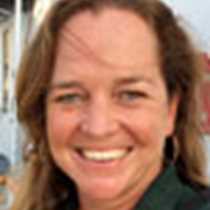This was the last of my trips up and down the Columbia and Snake Rivers this season, and it seems the river has given all of us its very best this week. Beautiful blue skies and warm weather for the first days, absolute flat calm whilst we were kayaking and Zodiac cruising up the Palouse River. But when we reached the spectacular Columbia River Gorge, we witnessed the unleashed wilderness of this area, as winds of over 50 miles an hour swept through the cut between the tall basalt walls. We couldn't help but think that however much we seem to have harnessed this area, it still keeps an elusive, indomitable streak that takes us back to the times of the adventure of the Corps of Discovery, and helps us understand the magnitude of the courage of the Expedition members. The experience was exhilarating, and we all enjoyed it on deck yesterday afternoon. It continued on through parts of the night, letting off just enough to allow us a peaceful beach bonfire in the evening, which also helped bring us closer to the explorers, though they no doubt had no smores and hot chocolate!
As we awoke near Astoria, the winds were covering the river in whitecaps. We moored at the Astoria City Pier and set off on our day's adventure, mainly rediscovering Fort Clatsop, where the Corps of Discovery spent their miserable winter of 1805. I was personally disappointed to still not witness the fort in the rain - my rotten luck continued and the sun shone on us during the visit ("could the expedition's journals, describing over 90 days of solid rain, possibly be wrong?" I wondered). During the day we continued our exploration of the picturesque Astoria, a Victorian port city on the banks of the Columbia, then set off towards the infamous Columbia River Bar. For decades, these three words struck terror in the hearts of mariners, as treacherous sandbars and swirling currents caused the loss of thousands of vessels over the years. We approached as closely as we dared to this "Graveyard of the Pacific" that still, despite modern aids to navigation, dredging and coast guard protection, commands the respect and awe of all seafarers. We had learned a lot about all this during our visit to the spectacular Columbia River Maritime Museum first thing this morning. The museum's largest exhibit is the bright red lightship Columbia. This ship was a floating beacon that was positioned at the mouth of the Columbia from 1951 to 1979, maintaining a service that dated back all the way to 1892. The Columbia's beam was visible for up to 15 miles, and her fog horn was heard for over a mile - she was responsible for saving innumerable lives in her time. What an exciting couple of days!




